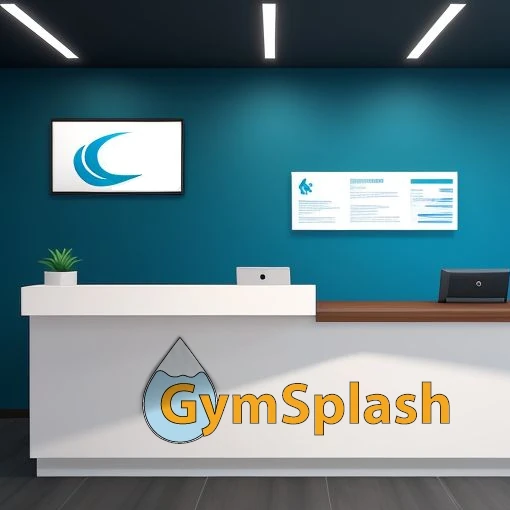Customer satisfaction surveys are commonplace in the consumer market. Whether a business follows up with you from a purchase made recently or the company you work for sends out an employee feedback/experience form, you have probably run into requests to partake at some point. As standard as these marketing survey requests may feel, have you implemented a gym member feedback or survey protocol for your facility yet? In this blog, we will dive into how surveys can help boost your fitness business, ways to collect feedback, and how to utilize the insights gained effectively.
Why Gym Member Feedback is Important
When running any business, getting feedback from your direct client or customer base is critical to understanding satisfaction levels, areas of improvement, or even a better understanding of the value, loyalty, or application your business holds within your audience’s mind. Running a fitness facility is no different; collecting gym member feedback is critical to operating a sustainable and profitable business. If your customer base is unhappy, your values are misaligned, or pain points are left overlooked, you may lose customers faster.
These types of customer losses are painful because you are decreasing your customer retention levels and not addressing the underlying issues driving members away. But the good news is actively engaging your client base to collect various types of feedback can help you uncover, address, and diffuse issues early on. Finding and acting on these points quickly can help smother any potential ‘fires’ before they have a chance to get too large.
Additionally, actions taken based on information acquired through client feedback forms can be a long-term positive for future client acquisition. This benefit comes from better aligning your business with your customers’ wants, needs, or expectations. In turn, these changes can make your business more appealing to other leads within your gym’s target audience due to the similar values that overlap with your current client base.
How to Collect and Measure Studio Client and Gym Member Feedback
If you have come this far into reading, chances are you see the value of receiving and implementing gym member feedback into your organization. Starting can feel tricky, though. Do you start by sending a survey? Do you just randomly talk with people and ask direct questions? Do you hire a third party to help analyze your fitness studio’s client satisfaction? Let’s discuss four options and their pros, cons, implementation, and measurement methods.
1) Questionnaire Survey
Questionnaires are a fantastic option for facility owners seeking quantifiable insights on multiple points or topics from their audience base. They usually consist of a series of questions, and the answers available are usually a range of options that can include agreement levels (agree, disagree, neutral), Yes or No statements, or scaled (1-5, 1 being “not interested” and 5 being “very interested”). Depending on your analysis needs, you can tally, analyze, average, or map out these options, but ultimately, the information is objective.
Unfortunately, where these surveys can fall short is not giving a complete picture. Due to the nature of objectivity, there is no room for explanation or additional information related to their rationale for rating or selecting the way they do. This lack of detail can later leave owners with further questions based on the data they collect. One remedy to this situation is to add a “notes” or “additional information” section after each question where participants can elaborate; however, it is typically a non-required field, which can still leave you with questions later.
Implementing these surveys can be reasonably straightforward. To build the study itself, you could use an online option (free or paid services available online, such as Google Forms or Survey Monkey), or you could develop it yourself using a word processor to print it out physically or save it for digital sending. Once you design the survey and it’s ready, the next move is to distribute it.
Getting the survey in front of your audience can take form in a few common ways (note: you also don’t have to select one route; you can mix and match as long as the questions and answer selections are all the same). First, you can consider emailing gym clients either a digital copy or an online link invitation to your survey. Second, you can print and distribute copies in person (or mailed) and allow them to fill out the document on-site or at home; just make sure to have a process to collect responses anonymously. The last method is to host in-person questionnaires where the person conducting the survey marks the answers manually.
2) One Question Survey
Like questionnaire surveys, these just focus on one question you want answered. These are great because you can typically get direct feedback, people tend to be more willing to answer a single question rather than a long list of them, and finally, you can get answers with a faster turn-around time. This type of questionnaire can also be dynamic because it could ask a quantifiable question or ask for subjective insights/feedback.
Again, mimicking the questionnaire survey, the cons of a single-question survey typically revolve around the depth of information. Asking a single question can lead to a rabbit hole of additional follow-up questions to better understand the issue. While this survey type can leave you wanting more context, these can still help you know the following questions you need to ask in the subsequent survey you run.
Building and implementing these one-question forms can be pretty basic. After establishing the question and what type of answer you want (quantitative or qualitative), the biggest hurdle is how to collect the answers most effectively. Again, you can leverage digital means like email and social media or other methods like printed forms and in-person discussion.
3) Feedback Forms
A feedback form for gym members can be a powerful tool. They often rely more heavily on qualitative data points and welcome longer explanations and deeper insights on specific topics or points. While these can still have quantitative data collection elements, they typically lean more towards getting a more comprehensive range of insights rather than a measurable answer.
The downside to feedback forms is that they are not too dissimilar to questionnaires in that more questions might remain or need additional clarification for the person reviewing the responses. However, the open design for answers on this form can mitigate some confusion due to the surveyee’s ability to answer the question in as much depth and detail as they like.
These can be built again online or offline (paper/non-software-based) and implemented through various means and channels. Likewise, a key point to focus on is collecting and consolidating the responses for review/analysis.
4) Social Polls and Questions
Although they focus more on social media and online applications, polls have properties and purposes similar to those of questionnaires. They tend to be quantitative-focused and data-driven but typically have a shorter question list (1 to 3 questions compared to a 10+ question survey). Additionally, these can drive drive engagement with your online fitness community.
Like many things related to online and social media, the engagement rate can often be tricky. Understandably, while we just said it can help boost engagement with your audience, engagement rates can still be low. However, it is still worthwhile to implement it as a multi-faceted tool. The polls and questions feature can help keep the active audience you already have engaged further while also giving you quick feedback on your prompt.
Utilizing Insights Gained From Data Collected
Once you have implemented your surveys and captured your gym member feedback, it’s time to put the data to use. Often, when you review the data and start to unfold a better story surrounding any issues or areas of improvement, you may have to figure out where to begin with making adjustments or changes. Outside of putting out the fires of the big problems, some of the changes that can come from your results can also help improve your overall business.
Building on the improvements to come as a result of your surveying efforts, you can use this timing to help construct or roll out a gym referral program. Understanding where your current client base stands on their enjoyment level, and willingness to recommend your facility is vital to a successful program. Further, improving the overall potential of a referral program taking off may also have additional benefits, like improving client retention in your gym. This retention efficiency is an organic result of the enhanced overlap in target audience/client values and needs with your facility.
Making A Splash
Whether you are looking to gather gym member feedback to help reduce your churn rate or improve your overall customer experience, surveying for feedback plays a critical role in the long-term success of fitness businesses. By focusing on collecting feedback, taking time to analyze it, and, most importantly, acting on it, you can help ensure that you have proper alignment with your business target audience. This alignment to confirm your studio is serving them in a way that they find helpful, beneficial, or value-adding can fuel your member retention rates and improve the overall feeling of customer loyalty.



